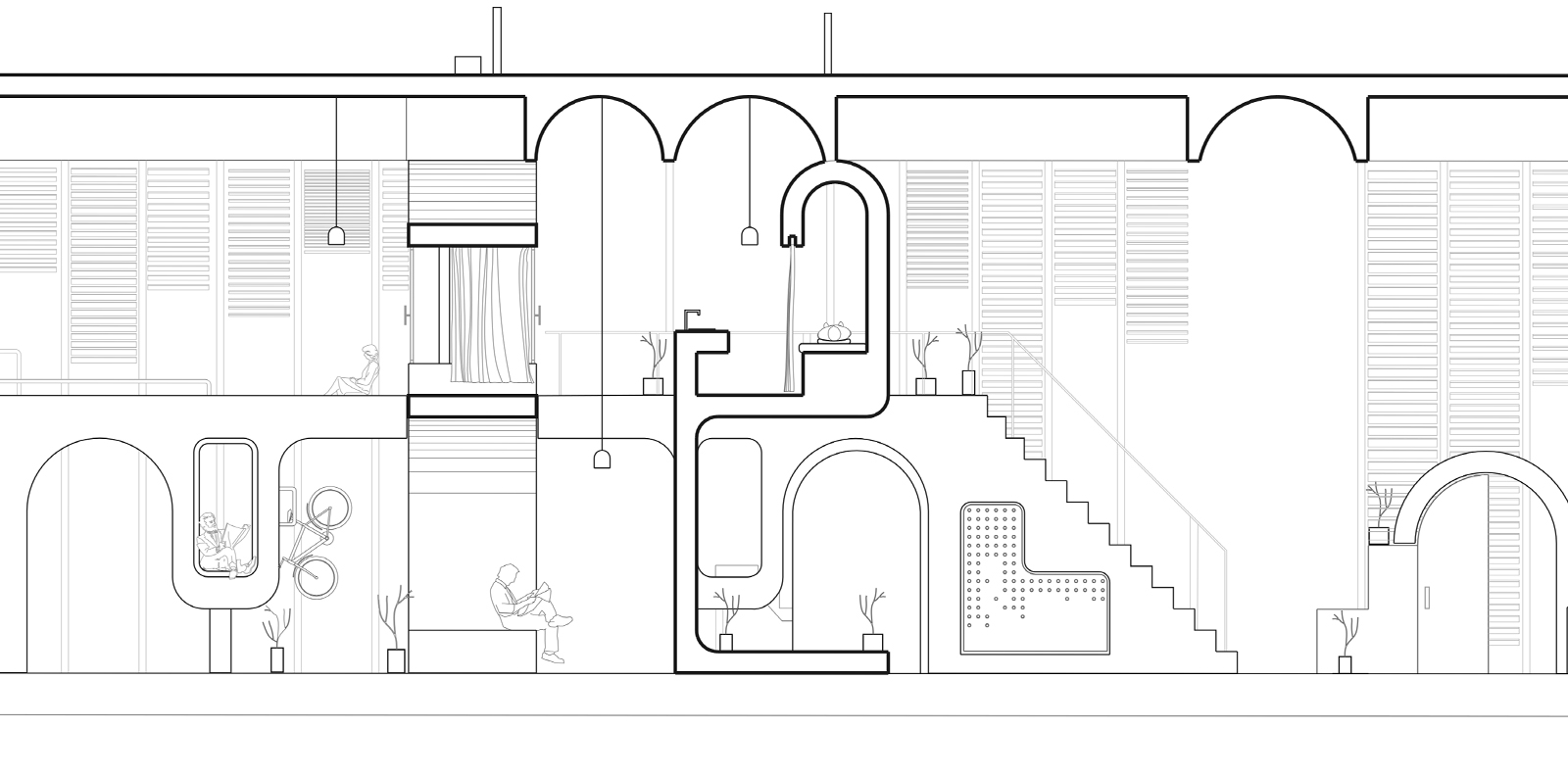Esau Hernandez
Concrete Living Units
From the second-year graduate studio Two Homes in One House, Fall 2018
Faculty: Julia Capomaggi, Grant Gibson
About the studio:
Moving beyond the promises of familial, economic, and social stability that the single family-house has long provided, and without reverting to known typologies (tenement house, townhouse), this comprehensive studio looked at contemporary modes of inhabitation and speculated on the possibilities of the single-family house as something slightly more than a shelter for related inhabitants: as a house of multiple homes. Demands for fragmentation, individualization, singularity, and intimacy that develop within home life were tested in ways that reconfigured ideas of the family, the collective, and the neighborhood.
About the project:
The proposal explores the possibility of fragmenting the domestic space into multiple “living units” instead of conventional rooms. The proposed units structure and frame everyday routines as a response to the partial segregation of specific activities. Each structure works both in isolation and in combination with its neighboring units, constructing a linear sequence of activities. The house is organized in levels; a family inhabits the house on the lower level, and temporary residents above. The inner space is collective and meant for interaction, where the noise, smells, and light of levels mix. Conversely, on the exterior, the domestic activities expand and separate. The overscale furnitures are built with construction materials (concrete)—becoming minibuildings or superfurnitures.




